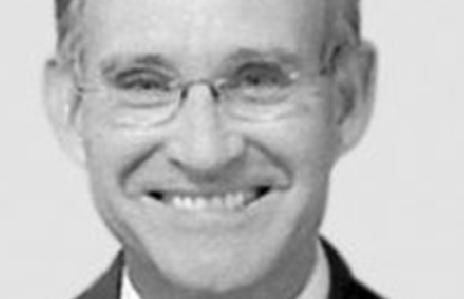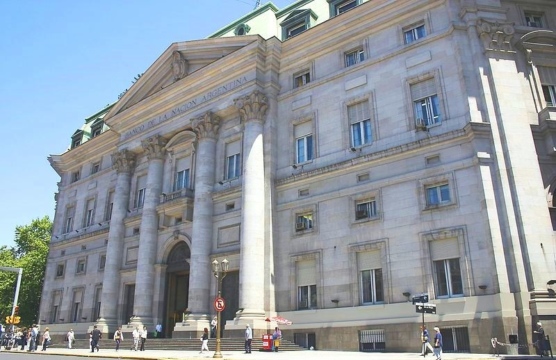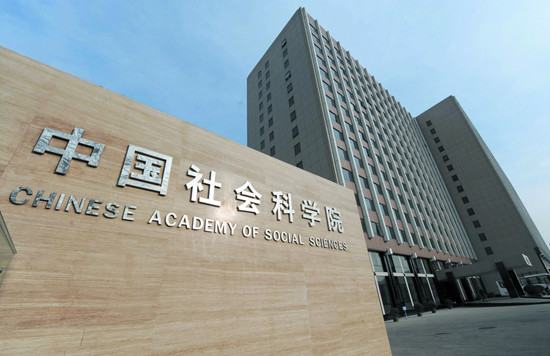The U.S. Embassy in Managua on Jan. 6 expressed concerns about a lack of transparency surrounding the proposed $50 billion project to build a canal across Nicaragua. In 2013, the Central American country granted HKND Group a 50-year concession without opening bids to other companies. The Hong Kong-based company has not released the names of investors backing the project, and the government has released no environmental impact or feasibility studies. In recent weeks, protests against the canal have escalated and turned violent, with more than 20 injuries, and police officers allegedly harassed and detained journalists attempting to cover the canal’s groundbreaking last month. What is behind the perceived lack of transparency surrounding the project? Will protesters succeed in halting the canal’s construction? How is the controversy affecting President Daniel Ortega’s government and domestic politics ahead of national elections scheduled for 2016?
Bernard Li, deputy public relations manager at HKND Group:
Building a canal in Nicaragua has long been a dream of the nation. Nicaragua has been considered ideal for an interoceanic canal due to its privileged topography, natural waterways and geographic location. Consequently, given continued growth in trade volumes and ship sizes, a canal through Nicaragua will create a cost-effective alternative for maritime transportation. Furthermore, the canal will be a catalyst for economic growth in the region. By building critical infrastructure and further integrating Nicaragua and Central America into the global economy, the project will spur significant economic and social development and job generation and will bring numerous business opportunities for companies around the world. We are developing the project based on the principles of legality, transparency and fairness; we work in close collaboration with national, local and regional authorities, business leaders and the affected communities, including indigenous groups and the Nicaraguan people in general. We have encouraged stakeholders to openly express their concerns and questions in a respectful and harmonious way. HKND Group strongly condemns the events that have developed into acts of violence. With close collaboration, best international practices and respect for human rights, we will be able to develop a project that will raise the living standards of Nicaraguans in a harmonious manner with the environment, their cultural heritage and most importantly with high responsibility for the future of the people. HKND has published key information on its Web site about the environmental and social impact assessments. We have met with groups including the Inter-American Development Bank and Wildlife Conversation Society and sought their comment on environmental and social considerations. We presented a comprehensive update of the project to experts at the World Bank, held six briefing seminars about the project across the country and have shared project details with local government agencies, community representatives and university students.
Robert Callahan, former U.S. ambassador to Nicaragua
It seems to me that when a project lacks transparency, then those in charge–the Ortega government and the Chinese–want to hide something from the public. That would seem to be especially true when that project will cost at least $60 billion, or almost 10 times Nicaragua’s GDP. Now, why would they want to keep it largely secret? I can think of several possibilities. Half-baked plans. Questionable financing. Corruption. Nepotism. Environmental degradation. But what if it is nothing more than arrogance–the sheer arrogance of a committed autocrat? In other words, Ortega does it because he can. He controls all four branches of government. He owns or influences most of the media. Unions support him, and many businesses, which continue to prosper under his administration, have become complacent, contented and docile. Meanwhile, the political opposition remains divided and quarrelsome. For those very reasons I fear that the protesters’ campaign will come a cropper. The Ortega administration either will wait until the protests wane, as it has done in the past with other issues, or will resort to intimidation, another tactic that various Sandinista governments have employed to good effect since 1979. Either way, I suspect, little will come of the protesters’ brave efforts. And the same holds true for domestic politics and the elections of 2016. When you have no cohesive political opposition, when you can steal elections with impunity, when the international community lets you get away with all manner of skullduggery, then why worry about policies that many of your citizens may dislike? No, the only thing that may weaken the current administration is economic collapse in Venezuela. And that is more than possible. It’s a near certainty. And soon.
Katherine Hoyt, co-director of the Nicaragua Network
President Daniel Ortega is looking to the canal project as a way to increase economic growth and employment, realizing that the 5 percent growth of the last few years is not enough to bring Nicaragua of poverty. However, the studies by major international companies on the environmental and social impacts and financial and technical feasibility are still ongoing and overdue. Preliminary environmental impact results influenced the choice of route and have resulted in modifications earlier this month to avoid affecting wetlands. But unless and until the feasibility studies come back positive, the international investors promised by HKND chief Wang Jing will not come forward. A top presidential advisor noted recently that even if ‘they only build the ports and roads, that in itself would be an enormous gain for the country.’ Protests by residents of communities along the canal route resulted in injuries when the authorities used force to clear a roadblock, including a police officer shot in the lung by a protester. But surveys consistently show a majority of Nicaraguans support building the canal, a centuries’ old dream for Nicaraguans. The government and the company have promised fair compensation for properties, and a similar promise was kept in the case of the Tumarin hydroelectric project, to be built by a Brazilian company. While the canal’s requirements for water would necessitate the reforestation of degraded tropical rainforest in Nicaragua’s southeast and would thus benefit the environment, grave concerns expressed by Nicaraguan environmentalists about the impact on Lake Nicaragua have not been dispelled.
Mario Arana, director of the Nicaraguan Foundation for Social and Economic Development and former Nicaraguan minister of finance and central bank president
The limited transparency may be because China’s government or powerful state companies are behind the project so there is no need for full transparency since international markets are unneeded. It could also be clumsiness and disorganization, a mentality anchored in the clandestine days of the Sandinistas from the past, or all of the above. Pieces of information are beginning to be published on the company’s Web page. Nevertheless, I do not believe that it will be the protesters who will derail the canal. If anything, it will be the inability to raise needed financing. However, the protesters already have forced the government and the company to be more sensitive to people’s concerns, and they will probably try to be more careful and professional in the future dealing with environmental and social issues. By now, the government knows that it has lost the national and international communication battle, and it will need to recover, especially, since in spite of all appearances, HKND Chairman Wang Jing insists that he will use a convenient stock exchange to raise financing, and therefore, full transparency would be required. According to polls after the protest, in areas of proximity to the canal route, the population seems almost equally divided between those in favor and those opposed, but the general population still favors the canal. Ortega is counting on it to substitute for a likely decline in support from Venezuela, and the promise of a better future based on the prospects of the canal is part of the party’s political campaign platform.
Christine Wade, associate professor of political science and international studies at Washington College in Chestertown, Md.
Nicaragua’s planned interoceanic canal has certainly generated criticism at home and abroad. There are clearly legitimate concerns about the concession to HKND. Additionally, the lack of transparency and consultation has added to concerns on the part of landowners and environmentalists. I think it was a serious miscalculation to inaugurate the project, however symbolic, prior to the completion and release of the feasibility and environmental impact studies. The Christmas Eve confrontation between activists and police demonstrates the tension over the lack of transparency and growing mistrust. It was ugly and unfortunate on both sides. I’ve seen little mention that the majority of those injured in the confrontation were police officers, though that would certainly not justify some of the complaints we’ve heard about detainees’ treatment. Despite these protests, I think it’s important to remember that a majority of Nicaraguans support the project. Supporters believe it will create much-needed jobs and attract new investment. The government estimates that the construction itself will create about 50,000 jobs, though that may be overly optimistic. Additionally, the canal will also require number of domestic infrastructure projects that would employ Nicaraguans. Businesses created around the canal would also create employment. But popular support is based on promises, and we need the aforementioned studies to know for sure. Ortega remains very popular, and I don’t expect this will have a significant impact on electoral support in 2016. Of course, I do expect the opposition to hammer this issue. Whether it will buy them any currency with voters remains to be seen.






















